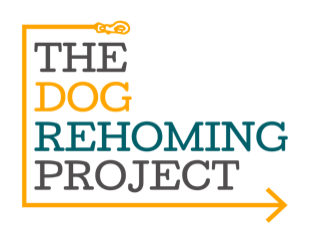
Shelter Dog Behavioral Assessments
How useful are shelter dog behavioral assessments?
Gain insight into this topic with the research of Dr. Kate Mornement, PhD, which focused on shelters' pre-adoption dog behavioral assessments, including a review of common practices, the development of a behavioral assessment, and an investigation into its overall usefulness to predict behavior post-adoption.
Check out the resources below to learn about the results of her research and the practical applications of it for both shelters and dog adopters.
These informative tools can be shared with shelters and dog adopters!
Watch our interview with Dr. Kate Mornement here:
Listen to the audio only version of the interview here:
Our researcher interviews are also available on Apple Podcasts, Google Podcasts, and Spotify.
Summary of Dr. Mornement’s research and its results:
Dogs remains popular pets the world over and most fulfill their modern role, as companion, successfully. That said, undesirable behaviour is one of the most common reasons for the relinquishment of dogs to animal shelters. Many shelters are unable to find homes for all the dogs in their care, either due to health or behavioural issues which render the dogs unsuitable as pets or because too few homes are available. Consequently, millions of dogs are euthanized in shelters, world-wide. It is not known whether the public hold negative beliefs and attitudes towards shelter dogs or are aware of common shelter practices, including health and behaviour assessment, which aim to remove unsuitable companion dogs from the adoption pool. It’s also possible that the public lack confidence in the accuracy of behaviour assessments currently in use and prefer to acquire a companion dog from an alternative source. On this basis there were several aims of my research: to investigate public perceptions towards shelter dogs and shelter practices; to review behaviour assessment protocols used to determine adoption suitability, and; to develop a standardized and scientifically informed shelter dog behaviour assessment and evaluate the reliability and predictive validity of the tool.
The development of the Public Attitudes towards Animal Welfare Shelter-Dogs (PAAWS-D) survey established that current and potential Australian dog owners are aware of common shelter practices and generally hold positive attitudes towards shelter dogs. Most participants said they would likely adopt a shelter dog in the future. Despite this however, many believed shelter dogs often have behaviour problems. The majority also believed that methods used to assess behaviour to determine adoption suitability should be scientifically valid. The extent to which shelters utilize scientifically valid protocols to assess behaviour was unknown so we conducted a review of protocols currently used by Australian animals shelters to assess adoption suitability and interviewed staff responsible for assessing dogs. The review revealed several important and concerning findings: a lack of standardization in the content and methodology of protocols being used; none had been validated in the scientific literature, and; staff lacked confidence in their ability to accurately assess dogs and in the tool they currently used. This finding led to the development of the Behavioural Assessment for Re-homing K9’s (B.A.R.K.) protocol to attempt to meet this need. The B.A.R.K., a scientifically informed tool, was then implemented into a working Australian shelter and evaluated for its test-retest reliability and predictive validity, via a post adoption telephone survey completed by the new owner. Although the results revealed B.A.R.K. was able to elicit behaviours which could be reliably rated by two experienced raters, the test-retest reliability, over a 24 hour period, was reduced and the ability of the tool to predict future behaviour was poor. Although B.A.R.K. successfully predicted fearful and friendly behaviour post adoption, it failed to predict aggression and a range of problem behaviour post adoption. We proposed that the stressful and dynamic shelter environment may cause canine behaviour to become unstable rendering any assessment of behaviour, the purpose of which is predict future behaviour, ineffective.
Despite some limitations and the need for further research this research made an important contribution to the scientific literature in its field. Shelters in Australia and elsewhere can utilize the results of the PAAWS-D survey to improve marketing and education campaigns to potentially increase adoptions. In addition, with further development and refinement, the B.A.R.K. protocol could be used as a tool to assist in the collection of behavioural information relating to adoption suitability. Shelters should acknowledge, however, that behaviour assessments only provide a snapshot of behaviour at that point in time and should collect as much behavioural information as possible relevant to dogs in their care. Potential adopters should be matched to appropriate dogs, provided ongoing support if needed and encouraged to continue to socialize and train their dog using welfare-friendly positive reinforcement methods.
References
Mornement, K. M., Coleman, G. J., Toukhsati, S., & Bennett, P. C. (2010). A review of behavioral assessment protocols used by Australian animal shelters to determine the adoption suitability of dogs. Journal of Applied Animal Welfare Science, 13(4), 314-329.
Mornement, K., Coleman, G., Toukhsati, S., & Bennett, P. (2012). What do current and potential Australian dog owners believe about shelter practices and shelter dogs?. Anthrozoös, 25(4), 457-473.
Mornement, K. M., Coleman, G. J., Toukhsati, S., & Bennett, P. C. (2014). Development of the behavioural assessment for re-homing K9's (BARK) protocol. Applied Animal Behaviour Science, 151, 75-83.
Mornement, K. M., Coleman, G. J., Toukhsati, S. R., & Bennett, P. C. (2015). Evaluation of the predictive validity of the Behavioural Assessment for Re-homing K9's (BARK) protocol and owner satisfaction with adopted dogs. Applied Animal Behaviour Science, 167, 35-42.
If you have questions about the research or would like a full text copy of any of Dr. Mornement’s published papers, email her at: kate@petsbehavingbadly.com.au.



